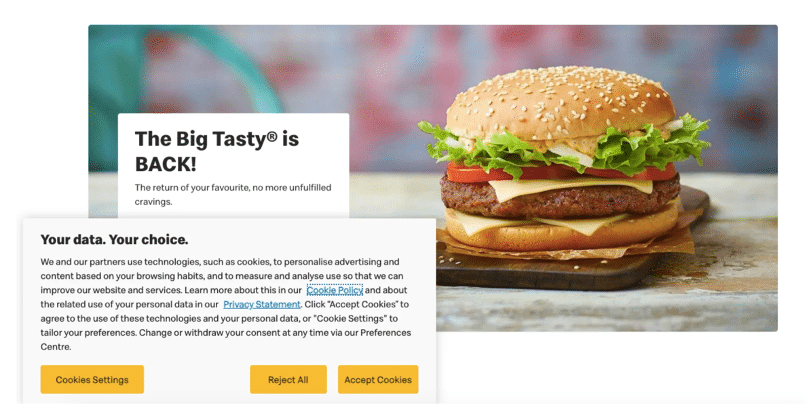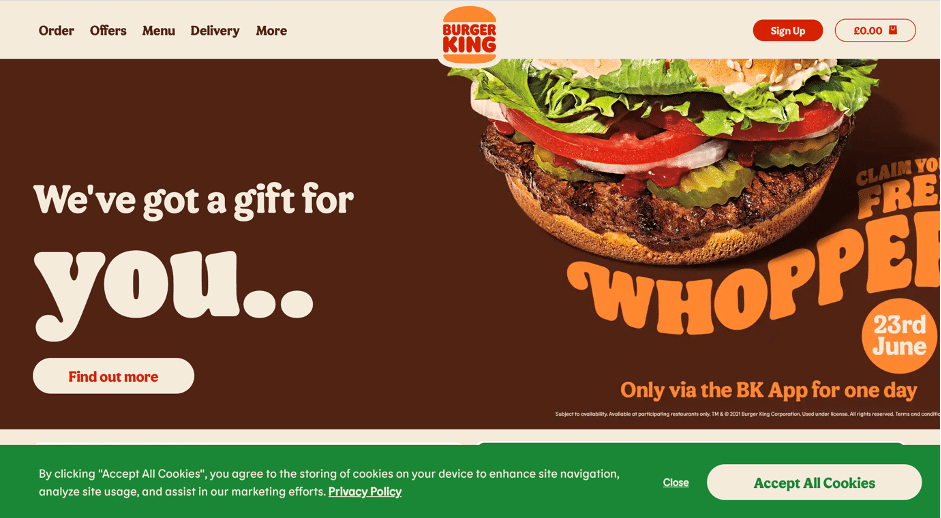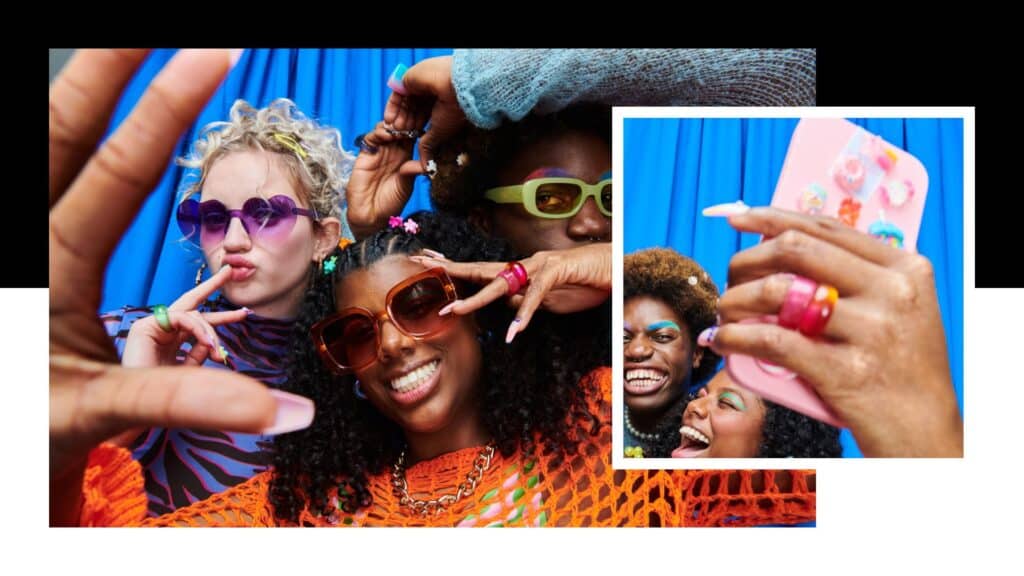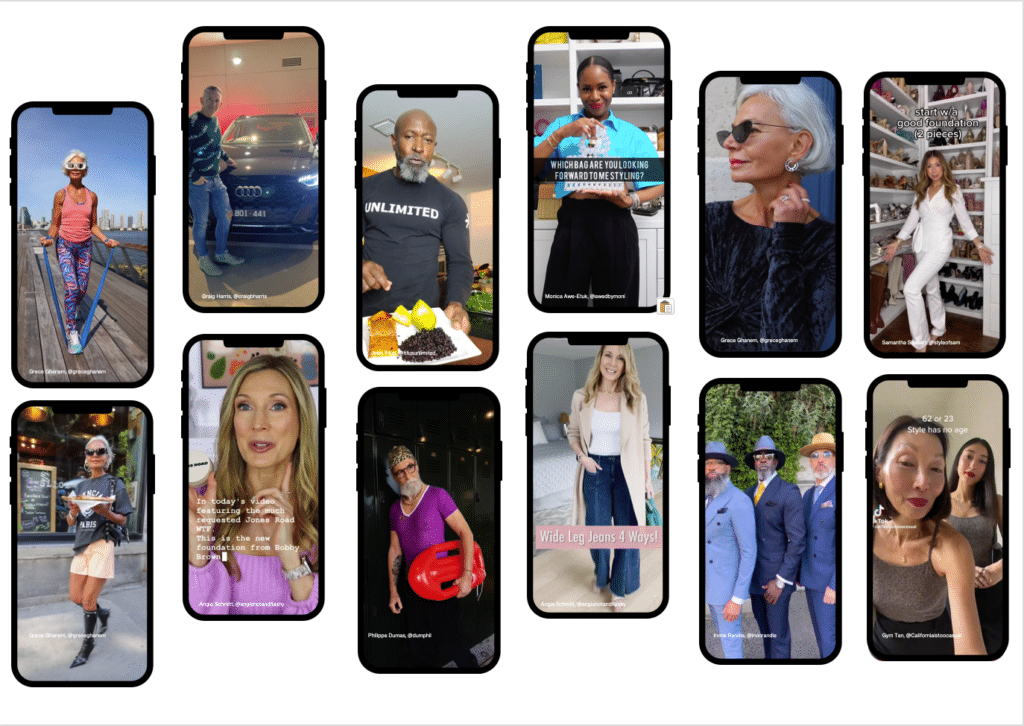In a privacy-first world, the Cookie Consent Button is often your brand’s first consumer touchpoint. If you’re still treating it as a mere data compliance check-box, you’re already losing out on valuable consumer engagement.
As well as a legal requirement and a must for capturing valuable consumer data in return for time spent on your website or apps, clicking yes or no to the Cookie Consent Button is often the first action users take inside your brand’s digital ecosystem.
This seemingly small step is your first real hello; it’s up to you to make it warm and welcoming – or chilly and clinical. Creating an experience that is true to your brand will not only enhance your audience’s experience, it will also address the diminishing consent rates that enhanced privacy legislation is inevitably causing.
To create a brilliant consent button for your brand, here are some simple things you can do:
- Recognise its place in the Consumer Journey – what role does it play in brand priming, action and engagement?
- Treat it as a creative brief in its own right – design, colour, layout, copy
- Apply media planning best practice – frequency, targeting, dynamic creative, optimisation
- Don’t speak like a lawyer, speak in the voice of your brand
- Think ethically as well as legally – what is right for your audiences, not only what is required by law
- Most important of all – be clear on the value exchange. What are you giving to your consumers that makes your request for their data fair and reasonable?
Evidence from a recent Wavemaker client where these best practices were applied showed an increase in consent rates of +50% and even led to consumers tweeting positively about the quality of the experience the brand had created with the consent button!
Here are two contrasting examples from two mega-brands, screen-shot this morning. McDonalds makes the cookie choice very clear for hungry consumers with the headline ‘Your data. Your choice’, followed by a simple explanation of what they use cookies for and two equally bright yellow buttons to accept or reject, plus links to their cookie and privacy policies. Burger King takes a completely different tone with the ‘assumptive close’, telling users that if they click ‘accept all’, they agree to their cookie policy, with no on-screen option to reject. The only way to opt out is click on the privacy policy link, scroll through lengthy terms and conditions and click another link to opt out.
The thinking may be that by not giving people an option to say no, they will simply click ‘agree’ and carry on, not bothering to take the time and effort to track down the opt-out option. The alternate view would be that users will appreciate the clarity and ease of two simple options. Only time and data will tell!


The Cookie Consent Button is a small but vital part of brands’ data consent strategy, often the only part that consumers see and read. (Multiple studies have found that upwards of 90% of people agree to terms and conditions without reading them.)
Not only is it rapidly becoming your consumers’ first touchpoint with your brand, in a privacy-first world, it’s the gateway to good data practice, which ultimately creates positive commercial outcomes. As all good shopkeepers know, retail is detail.

Anna Hickey, Global Client President
Related Articles
- The Provocateur: No cookie, no problem
- The Provocateur: A cookie-less world is a win for consumers – and advertisers
- The Provocatuer: The end of average: Why ‘addressable priming’ is the future








